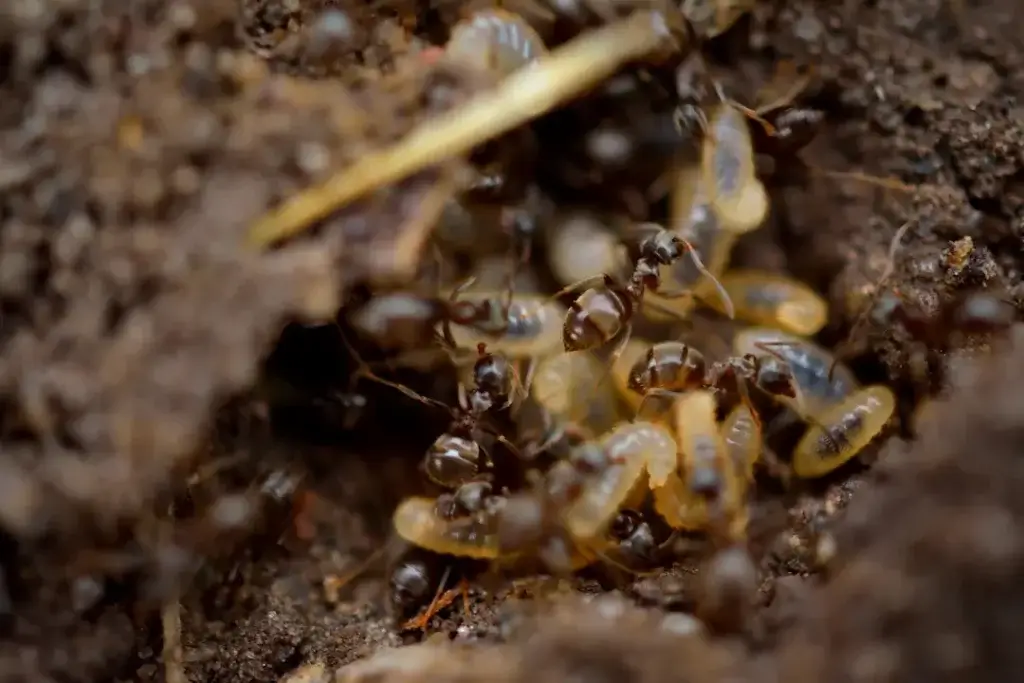
Types of Termites in North Carolina

No one wants to get the news that their home has been the victim of a termite infestation. Unfortunately for homeowners in North Carolina, this isn’t an uncommon problem as the warm and humid climate of our state lends itself to these wood-eating nuisances.
It can be an annoying and costly problem. In fact, in a 2022 Consumer Affairs report found that homeowners with termites spend an average of $3,000 to fix the damage caused. To get ahead of this potentially devastating issue, A-1 Pest Control has your guide to the termites you need to watch out for in North Carolina and how to be proactive about treating them:
What are Termites?
Termites are insects that feed on wood and most commonly appear in two forms: the worker and the swarmer.
The workers are small and cream colored and are typically only seen in mud tubes or when wood is broken open. The swarmers are the ones most often identified by homeowners, and are around a quarter-inch long and may have wings. The swarmers do not eat wood; their only job is to leave the colony to find mates and start new colonies.
Because termites prefer warmer weather, the swarming season in North Carolina lasts through spring, summer, and much of fall. A swarm usually follows rain.
Types of Termites in North Carolina
The Eastern Subterranean Termite
There are several different types of termites commonly found in North America, but in North Carolina, there are only a couple that you're likely to come across.
The Eastern Subterranean Termites are cream-colored, about an eighth of an inch in length, and are blind with soft bodies. They do not have wings, and swarming happens most often in the spring—though it may happen at any time of the year.
Subterranean termites, as their name suggests, can only get into your home and travel through the ground, or through the mud tubes they construct. However, they can spread fairly quickly, with the queen capable of laying up to 2,000 eggs per day. It's possible for a termite colony to grow to include millions of members, with the damage they cause worsening as their colony becomes bigger.
Once they are in your home, they can travel upward through the mud tubes they build on walls to infest multi-story homes if they are not caught before they can make this progress.
Formosan Subterranean Termites
The Formosan Subterranean Termite is less common in North Carolina, but is still sometimes found here. Like the Eastern Subterranean species, these love humid, damp, dark spaces like attics and basements.
The swarmers in this species have wings, and are around five-sixteenths of an inch long with pale yellow or brownish yellow bodies.
These are sometimes known as “super termites”—and it's as bad as it sounds. These are voracious eaters, with a mature colony able to eat a 2x4 piece of wood in less than a month.
West Indian Powderpost Termites
The West Indian Powderpost Termite is only found along the east coast, from Virginia down to Florida. Rather than being attracted to damp spaces or soggy wood like other species, the West Indian Powderpost termite is attracted to wood with a low moisture content. That means they are more commonly found in furniture and timber.
The swarming season for this species is typically right after winter, and their swarmers are larger at about half an inch long. They are usually yellow- or reddish-brown in color, with iridescent wings.
Signs that You Have Termites
If you’re worried that your home might have termites, there are a few tell-tale signs to look for. Some of these might present in the structure of your home, like:
- Drooping drywall
- Peeling paint
- A hollow sound when you knock on the wood
- Pinpoint holes in drywall
- Buckling hardwood floors
- Crumbling or damaged wood
Other signs may be a trail that the termites themselves leave, and may look like:
- Piles of wings left behind
- Mud tubes around your homes foundation
- Termite swarms anywhere on your property
By the time these termite activity becomes visible, they may already have been present in your home for months or even years. Because of this, it’s a good idea to have your home inspected by a professional regularly to catch an infestation before they cause expensive damage.
If you’re looking for one of these termite control treatments, contact us ASAP for your free estimate!
